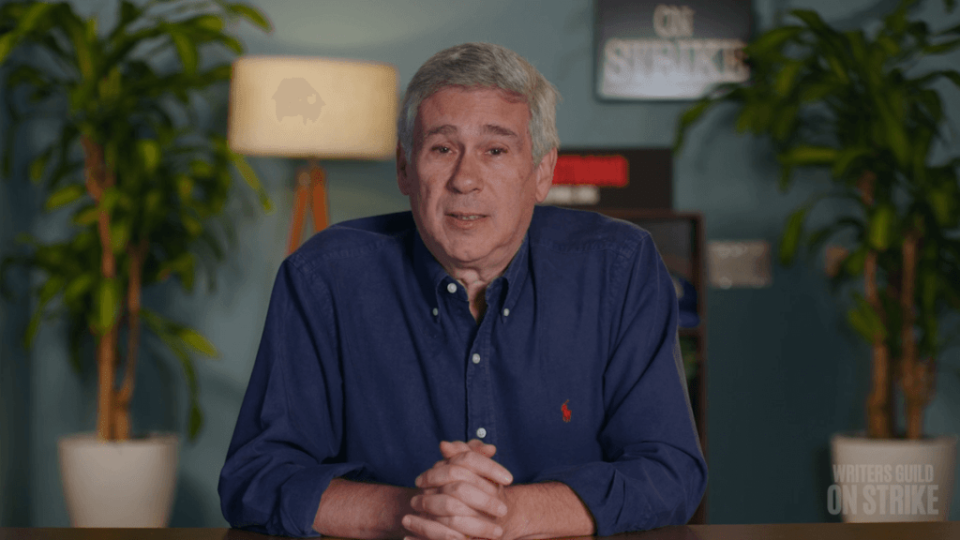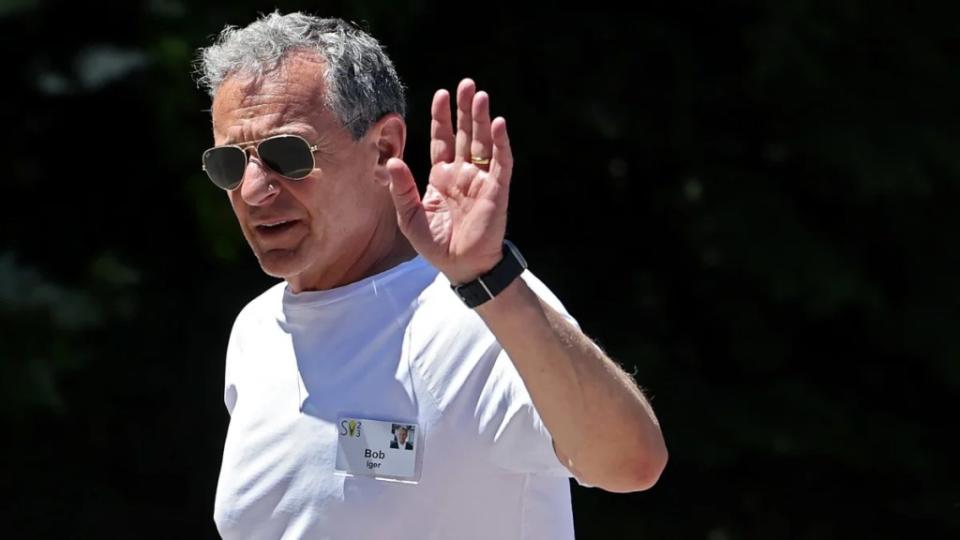5 Days to End the Strike: When Writers and Studios (Finally) Hit a Contract Breakthrough
If it’s possible to pinpoint an exact moment when the writers strike that was once feared to extend into 2024 reached the beginning of the end, it was on Wednesday, Sept. 20, when the Writers Guild of America negotiators received what they had been demanding for four months: a full counterproposal.
“My first thought was, ‘My God — f—ing finally. Finally they get it,” WGA negotiating committee member Adam Conover told TheWrap. “They get what they have to do.”
On that day, the WGA met with four Hollywood CEOs from the Alliance of Motion Picture and Television Producers (AMPTP) at the latter’s headquarters at the Sherman Oaks Galleria. It had been nearly a month after a previous round of “frosty” talks, as one insider put it, barely got them anywhere and ended with the studios publicly releasing a proposal that left writers angrier than ever.
But WGA negotiators who spoke to TheWrap said that from the moment Disney’s Bob Iger, Warner Bros. Discovery’s David Zaslav, NBCUniversal’s Donna Langley and Netflix’s Ted Sarandos walked into the room, the atmosphere was like “night and day” compared to their last encounter back in August.
Where there was once resentment, there was cordiality. Where there were talks of what couldn’t be given, there were offers of what could be. And where there were proposals that the guild thought were “neither nothing, nor nearly enough,” there was now a proposal that felt like the basis for a fair deal.
How that led to five intense days of ultimately successful negotiations, culminating in a deal just as the sun set at the start of the Jewish holiday of atonement — well, read on.

Getting to Wednesday, Sept. 20
Insiders on both sides of the talks say that breakthrough moment was made possible by a series of end-of-summer phone calls made by WGA Negotiating Committee co-chair Chris Keyser to several studio CEOs. That was after they and the AMPTP briefly met with the WGA on Aug. 22 in a meeting that, according to the guild’s account in a member memo, consisted of the CEOs urging the guild to accept the counterproposal it had offered 11 days prior.
That proposal was refused twice, first by the negotiating team at that meeting and then by the rank-and-file when the AMPTP pitched the offer by releasing it publicly. Insiders say that the rank-and-file rejection helped send a message to the studios — expressed in vociferous tones on picket lines and over social media — that the guild’s call for a deal that left no section of its membership behind truly came from the entire union, a message that was further pressed by Keyser in his calls with the CEOs.
As Labor Day came and went, and calls were made publicly between the two sides urging the other to make the next move, restlessness in Hollywood grew. Showrunners began asking for meetings with WGA leadership to share their concerns for the financial stability of the writers and crew members on their shows, and asked for updates on when talks might resume. The financial damage for the studios was mounting in their SEC filings, with Warner Bros. Discovery projecting that its 2023 earnings would take a $300-$500 million hit from the strike.
Eight days later on Sept. 13, Keyser made a call to Zaslav, one that thawed the ice that had stood between the two sides through the summer. There was a mutual agreement that it was time to put aside who needed to make the next counterproposal, and get Hollywood back to work.

Zaslav called the AMPTP and his CEO compatriots, and the process began. It was agreed among the studios that Zaslav, Iger, Langley and Sarandos would once again be the quartet of CEOs in the room. Top execs of other member companies, such as Sony Pictures Entertainment chairman Tony Vinciquerra and Paramount Pictures CEO Brian Robbins, would be present remotely when the two sides broke into side rooms.
“Zaslav and Iger were the drivers. They’re the deal guys who understood the imperative to get in a room and be face to face,” one studio executive with knowledge of the CEOs’ strategy said. “Langley and Sarandos brought their expertise of understanding the impacts of contract language in the real world and knowing what mattered and didn’t matter most.”
Meanwhile, the studios began crafting a counterproposal that would try to answer the guild’s key concerns while solving their own objections to the writers’ proposals, such as the perceived inflexibility of the WGA’s model for minimum staffing requirements.
Also significant was the addition of a proposed system that would offer bonuses to writers of films and TV shows that become streaming hits, a counter to the WGA’s proposal of a viewership-based residual in addition to a fixed residual for streaming.
That counterproposal signaled to the WGA that it was time to truly negotiate.
“This was no longer the domain solely of the AMPTP operatives who had pursued a strategy that clearly had not worked,” WGA West vice president Michele Mulroney told TheWrap. “There were new people in the driver’s seat with real resolve to get this done, and thanks to Chris’ calls there was real clarity and acceptance between the parties about what the negotiating terrain looked like.”
With the studios’ new counterproposal accepted as a baseline, the negotiating process both sides wanted to happen six months ago finally began. The CEOs’ team and the WGA negotiating committee would alternate between exchanges in the main conference room and internal discussions in the side rooms. Mulroney couldn’t pinpoint exactly when certain key gains on topics like minimum staffing, Appendix A writer protections and screenwriter pay were secured, but said that they were all advanced simultaneously.
Thursday, Sept. 21
By the time talks started Thursday, the mood was extremely optimistic… maybe too optimistic.
Word got out from the studio side to agencies and reporters that things were progressing so well that a deal could be finished and announced as soon as Thursday or Friday.
But the WGA wasn’t interested in speed.
“Once we had these proposals in play, we really needed to take the time to get them right,” Mulroney said. “We have to get this right for our members, who gave us this leverage. We were going to go over every piece and not rush over the finish line.”
But the momentum and optimism after months of inaction helped lead to the one big speed bump in talks on the evening of Thursday, Sept. 21. Studio insiders say that at around 5 p.m., the Writers Guild negotiators came out of side room talks and presented “a new list of items that had not been a part of what had been discussed and advanced during the day.”
The move angered the CEOs, with Zaslav and Iger seeing it as a break in good faith to add new issues that they hadn’t been aware of when issues were outlined the previous day. All four CEOs left the room.

Insiders told TheWrap the issue in question was regarding protections for writers who wished to remain on the picket lines in solidarity until SAG-AFTRA reached its own deal with the AMPTP, an issue that was brought up by the WGA to AMPTP negotiators in August prior to the CEOs getting directly involved.
Mulroney wouldn’t verify the specific issue that caused the disagreement, but maintained that what was brought up by the WGA wasn’t a brand new issue.
“I don’t want to put any drama around it because that’s not how it felt. It was just simply a case of the CEOs having to get up to speed with stuff that the AMPTP had in their possession for seven months and were fully familiar with,” she said. “There were just some details that may have felt new to the CEOs that were not new.”
Mulroney also flatly denied reports that David Young, the longtime WGA leader who had served as chief negotiator in many previous cycles and reportedly stepped down due to medical issues, had offered remote advice to the negotiating team during the side room talks prior to that CEO walkout or at any time during the negotiating process.
“He was not contacted. He was not giving any feedback. This deal was thanks to Ellen Stutzman acting as our chief negotiator alongside our senior guild staff looking through all the fine print,” she said. “David Young, whom we love and respect, was not in Ellen’s ear, and it is incredibly irritating to us, frankly, to imply that Ellen Stutzman did not carry this across the line.”
After the CEOs left, Stutzman ensured that cooler heads prevailed as she resolved the dispute with AMPTP President Carol Lombardini, with both of them agreeing to keep things moving and to return to talks on Friday, which would be the final day where the CEOs were present.
Friday, Sept. 22
On Friday, Adam Conover said it became clear to the WGA which issues were going to see major gains and which ones they would have to compromise on. While securing additional streaming compensation for writers of hit films and shows through the bonus structure, the guild also agreed to the studios’ offer to provide viewership data that would have to remain confidential, with only aggregate data being made available to writers.
Another negotiating point that was a tough loss for Conover was their proposed guarantee for writers to be paid at minimum rates through the postproduction process. While minimum pay guarantees for a certain number of writers were ensured during the shooting process in the new contract, that ends when the cameras finish rolling, and Conover knows through personal experience that getting full writers’ pay all the way through post can mean the difference for some members for qualifying for union health plans or not.
But any disappointment he had about those losses was outweighed by the pride he felt in the guild’s commitment to not leaving anyone behind.
“When the narrative television writers realized they were not going to get writers in post, you know what they said? They decided that with our last bit of our leverage, we need to go make gains for screenwriters and Appendix A writers,” he said.
And that was indeed secured, as the WGA won two-step pay for screenwriters — a goal that eluded them for many contract cycles — and minimum rates for writers of comedy-variety, talk, game shows and other Appendix A TV shows expected to show up in greater numbers on streaming in the coming years.
Saturday, Sept. 23
By Saturday, the key issues were all resolved, and all that was left was the long, tricky process of nailing down the contract language. Protections on artificial intelligence were especially complex given that it involved a new technology whose potential impact on Hollywood is still largely hypothetical. The WGA helped speed up the process by bringing additional legal team members working on other floors in the AMPTP headquarters into the main area where they had talked with the CEOs in the days prior.
Sunday, Sept. 24
On Sunday, the last WGA picket line was held outside the set of ABC and Disney+’s “Dancing With the Stars” at CBS’ Television City studios, just a block away from the WGA headquarters. Signs on the pickets took shots at headlines about the studios giving their “best and final” offer to the guild.
But inside the Sherman Oaks Galleria, that was all noise. The legal talks weren’t done, but the WGA believed it was far enough along to make the announcement at 7:15 p.m. that all of Hollywood wanted to hear: They had a deal.
“From the beginning, our members showed focus throughout this strike. They blocked out the rumors and we stayed united in what we were demanding, and we brought that same focus into these talks,” Mulroney said. “Once the studios understood that meeting us on this level and not using the same AMPTP stall tactics was the only way out, the end was in sight.”
Sharon Waxman contributed to this report.
The post 5 Days to End the Strike: When Writers and Studios (Finally) Hit a Contract Breakthrough appeared first on TheWrap.

